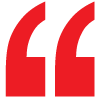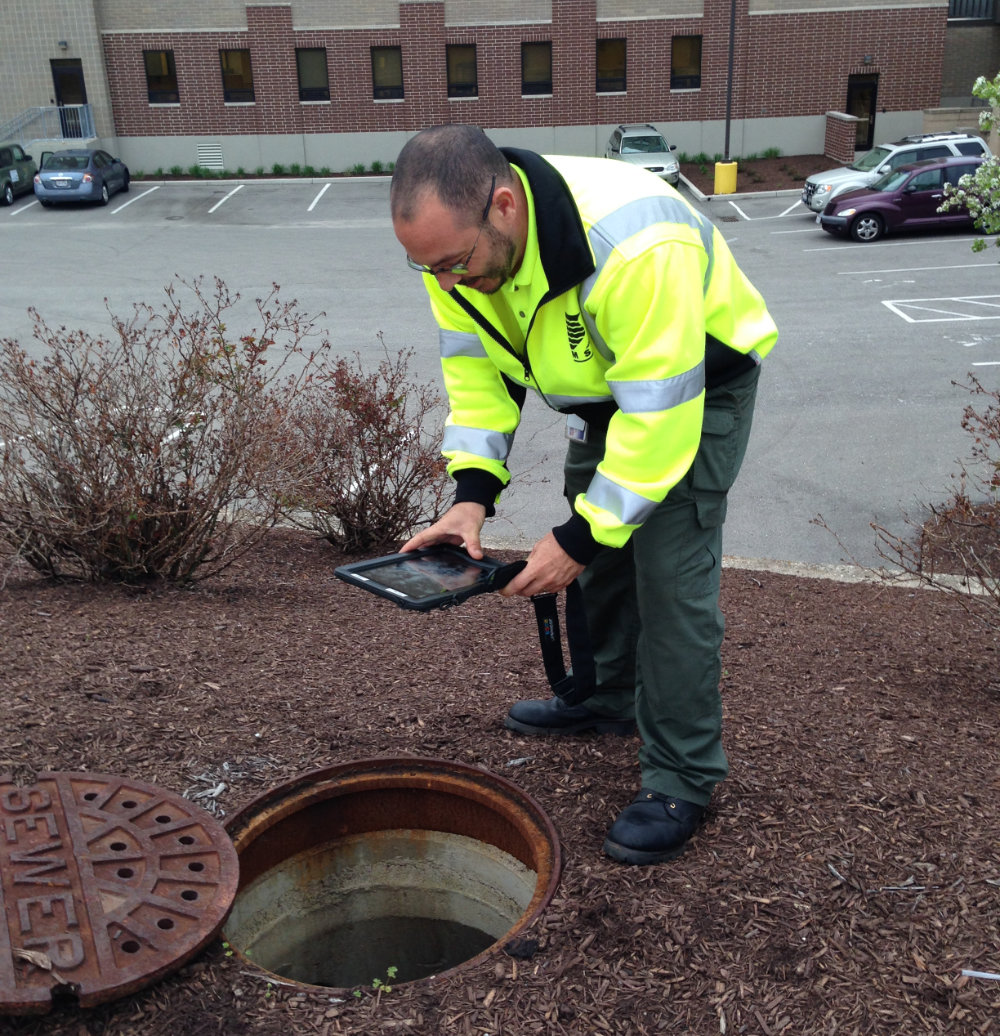City of Cincinnati Optimizes Field Services with Workflow Apps

Local Government: City of Cincinnati
Division: Utilities, Wastewater Collection
Function: Field Service Management, Customer Service Management
The Challenge
The Metropolitan Sewer District of Greater Cincinnati's Wastewater Collection Division is responsible for managing and maintaining the city's sewer infrastructure and providing customer service for over 1 million residents and businesses. The division manages the activities of 150 full-time field technicians plus contractors to perform critical maintenance, construction, and customer support activities across the city.
Like many field service organizations, the department was using several software systems for daily operations, but managing mobile access to these systems was difficult. Field technicians would carry around paper forms to report on jobs, which required time-consuming data entry and often led to missing and inaccurate information. Crews also used ruggedized laptops, but keeping the laptops up-to-date consumed IT resources, and the applications were not user-friendly. The department needed an efficient way to build mobile business process applications to streamline all these systems.
Software Selection
The management team wanted to build flexible business applications themselves, that would deliver high quality service and more value to their customers. The applications would guide field technicians and other staff through a wide variety of complex business processes in easy-to-follow steps. They would also allow employees to gather accurate data, as well as look up information needed to do the job, anytime, anywhere.
The platform needed a robust, offline mobile client to coordinate and manage field activities on smartphones and tablets. The management team also wanted the ability for business groups to create and maintain custom apps themselves, without requiring IT or development resources.
The Solution
After evaluating several mobile tools, the City of Cincinnati selected Flowfinity for its depth of functionality to support their full requirements and its flexibility to quickly modify and deploy apps without any coding. Flowfinity's point-and-click software includes a centralized database and flexible integration features, enabling business users to create easy-to-use enterprise applications using a web-based editor.
"Flowfinity is a valuable tool to guide our employees through complicated situations so they make the right decisions, take appropriate action, and document activities completely and consistently," said Katherine Rahtz, Assistant Superintendent, Wastewater Collection Division.
With Flowfinity, the City of Cincinnati has achieved the following key benefits:
- Significant IT savings - By using a software product that supports business application creation and maintenance without any coding, the city was spared from lengthy development cycles. Additional savings were achieved by reducing the software maintenance required on laptops.
- 30% more time available - The division increases wrench-on-bolt time with a new Flowfinity work order management system, achieving higher value for labor dollars spent.
- Hardware replacement cost savings of $87,500 - by replacing expensive ruggedized laptops with iPads, the Wastewater Collection Division has reduced hardware costs.
- Annual call center cost savings of $76,000 - With more efficient staffing for fluctuating call volumes, clearer call-by-call instructions and a better follow-up process, call center costs have been reduced.

"Flowfinity is a valuable tool to guide our employees through complicated situations so they make the right decisions, take appropriate action, and document activities completely and consistently."
Q & A
Mike Pittinger, Wastewater Collection Superintendent at the Metropolitan Sewer District of Greater Cincinnati, spoke with Flowfinity about what led their team to the software, and the benefits they've realized from using it for automating mobile business processes so far.
What were the main problems you were looking to address with a mobile tool?
Our crews were using several software systems to manage work in the field, and we were having problems keeping information up-to-date. Training was also difficult because our staff and contractors perform such a wide range of jobs with complicated workflows, and the software we had was not very user-friendly.
We wanted a software solution that would let us take these complex workflows and present them in a very simple user interface that would allow our staff to capture the right information at the right time.
Why was it important for you to track operations with mobile devices in the field?
Mobile applications with real-time data provide accurate information at any time, and eliminate the need for data clean up. As a utility service that operates on asset management principles, tracking our work history on assets is critical to helping us make the best decisions in deciding when to repair, rehabilitate or replace them. Bad or inaccurate data leads to non-optimized spending and higher life-cycle costing. Accurate data leads to better, more informed decision-making.
What type of solution were you looking for?
We knew that we wanted to leverage the simplicity of mobile devices, but we still needed to track jobs and assets in our legacy CMMS systems, which have very specific requirements. We wanted to integrate them with a field-centric iPad app to help guide people through very complex workflows without them necessarily knowing how complex the logic was.
We needed to create a simple system with step-by-step instructions that would help employees get through specific tasks and jobs, and only show them what they need to see to do a specific job. This is especially helpful if they aren't involved in that type of job regularly.
Why did you choose Flowfinity over other solutions?
We were looking for a completely different way to provide our services using technology. Flowfinity stands out because it's a true workflow solution with incredible functionality. It gives the business user the power to quickly create apps with deep functionality such as custom workflows, integration, and flexible data capture features without any coding. This greatly reduces the IT resources required, because ongoing changes and new applications can be implemented by the business group.

"Flowfinity gives the business user the power to quickly create apps with deep functionality such as custom workflows, integration, and flexible data capture features without any programming."
The apps that we designed with Flowfinity are really self-guided and easy to use, which means the training required goes down dramatically. The ability to control which fields are displayed or mandatory in different layouts and at different points in the workflow is a really important feature, because it provides step-by-step guidance to our field technicians. We can also link to other systems straight from our Flowfinity apps such as our online GIS system to create a very seamless experience for the user.
Flowfinity was also able to meet the stringent security requirements set out by our IT group. We rolled out our first applications for production use literally within weeks. I really think it's a brilliant product.
What is the value of being able to build and modify your own apps without coding or IT resources?
With the easy-to-use app editor, we primarily have the operations team, not IT, go into the software to build apps or make updates. It's very intuitive, and gives us the power to adapt quickly to changing conditions and requirements.
Our business requirements change often, whether it's continuous improvement or a change in policy, because we operate in a regulatory environment under permit requirements. We might have to gather additional information or be able report on the information differently. If we had a customized application and had to go back to IT to gather additional information or make a certain field mandatory, there would be substantial time and resources associated with that.
There are a lot of cost savings in eliminating development projects where we have to convey to the IT department what the business needs are, in an area they're not familiar with, and have them come up with an interface that makes sense for the average user.
The reality is that the IT department is so busy, that they may not even be able to develop custom apps for us at this point. What this would likely mean is that we would have to contract out the work to have custom mobile apps developed, and then supported, which could be very expensive. This would also take substantial time, which would result in lost opportunity cost due to delaying efficiency improvements.
Can you describe how the field applications are used?
 Once a work order is created and assigned to a user in our CMMS, a record is automatically created in Flowfinity and assigned to the appropriate field technician with the right information for that particular type of work order, so that they can use the guided Flowfinity iPad app. The information gets collected and populated back into the CMMS system in real-time, including photos and signatures. It's a very comprehensive record of everything the field technician did.
Once a work order is created and assigned to a user in our CMMS, a record is automatically created in Flowfinity and assigned to the appropriate field technician with the right information for that particular type of work order, so that they can use the guided Flowfinity iPad app. The information gets collected and populated back into the CMMS system in real-time, including photos and signatures. It's a very comprehensive record of everything the field technician did.
It's designed so that for every work order, we have a record of actual time spent on the activity, which can be easily compared to our planned activity time. This means that we can readily measure what's happening down to the individual employee. It's designed around accurate measurement, which supports good management. Flowfinity is the core mobile technology we use for enabling employees to capture the right mandatory information at the right time, and create an accurate record of field activity.
Was improving customer service one of your goals with this system?
Previously we did not have a way to send automated reports to customers. It's really important that we provide customers with a record of what we did, and what we found when we were there. We want to show people that we're trying everything we possibly can to make sure they get the best value for every dollar they spend, and Flowfinity helps us accomplish that goal.
Have you leveraged Flowfinity software for use cases other than guided field applications?
The other driving piece is that we are often in emergency mode because we handle service requests, and our work is highly dependent on weather. When we have heavy rain, we can get hundreds of service requests coming in in a very short period of time and enter crisis management mode. Out of necessity, we used to pull people who don't normally answer customer calls into that emergency role. That was very challenging because we needed them to follow very specific workflows and gather specific information to respond appropriately to every request.
We identified a cost savings opportunity by leveraging Flowfinity for limited call taking functions. We were able to move to a contracted call service during overnight hours when the number of calls is regularly very low, rather than staffing our call center 24 hours a day, as well as add additional resources to handle peak call volume during wet weather events.
We wanted to provide the call service employees with a platform that would allow them to categorize the calls that were coming in, and guide them through a series of logical steps. The workflows and logic that we built into the application are quite extensive, and the employees simply have to follow the prompts. We are using lookups from different data tables to keep on-call supervisor information up-to-date, which makes it easy to close all the communication loops.
It works very well, and it has helped us save about $76,000 annually by only paying on a per-call basis. It's been a cost savings initiative that also allows us to provide better customer service.
Can you describe your experience with the Flowfinity support team?
Anytime I've had any questions about anything or sent anything to support, the response has just been incredible. I feel they are really listening.